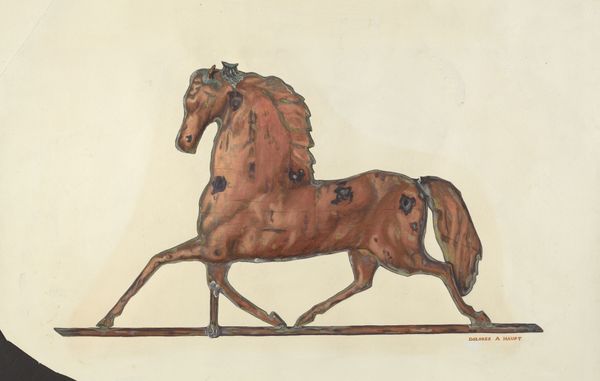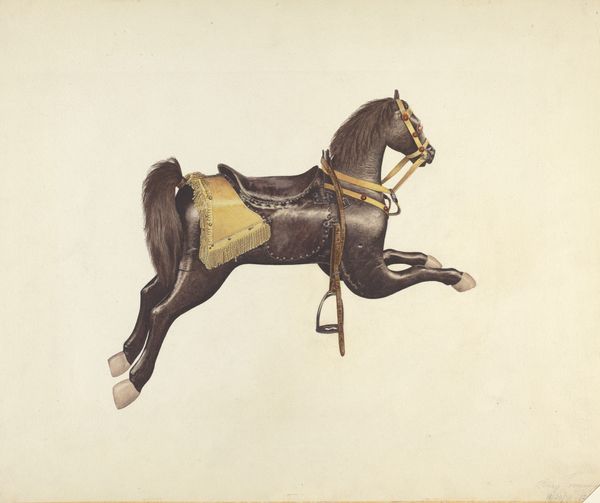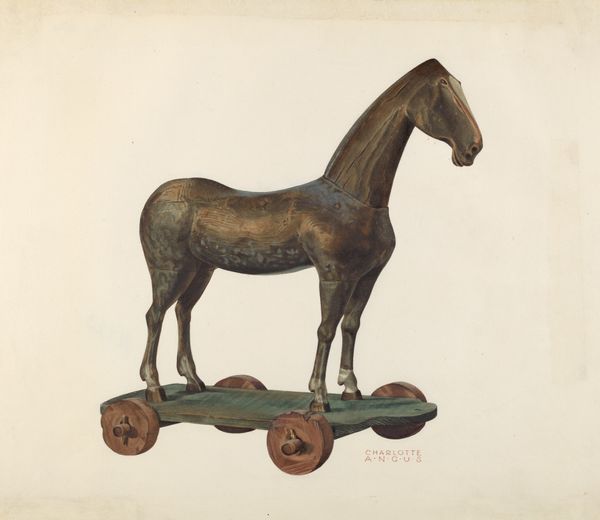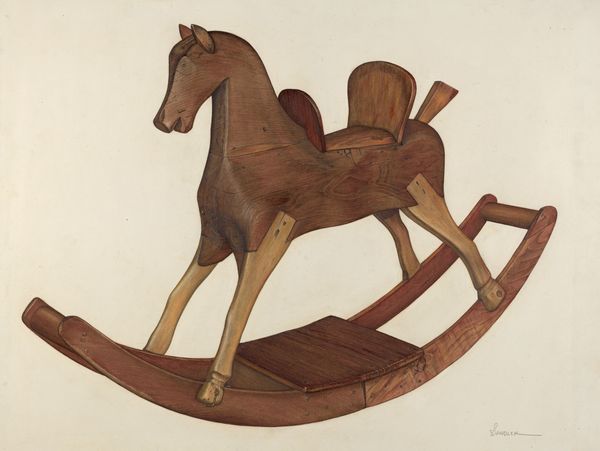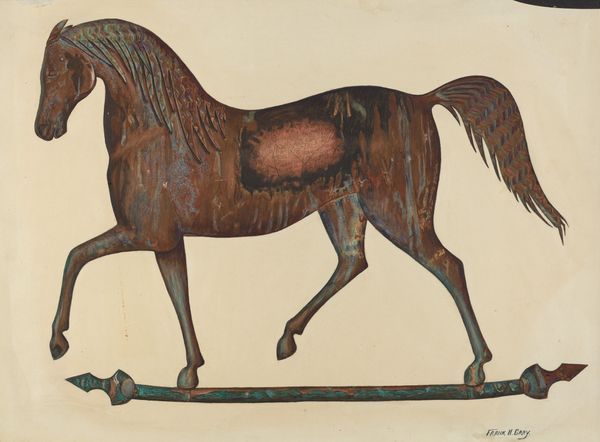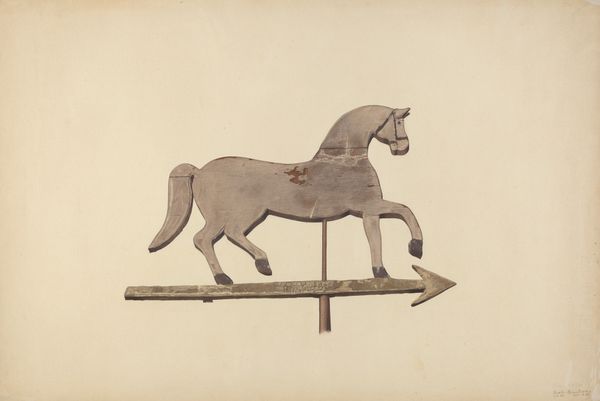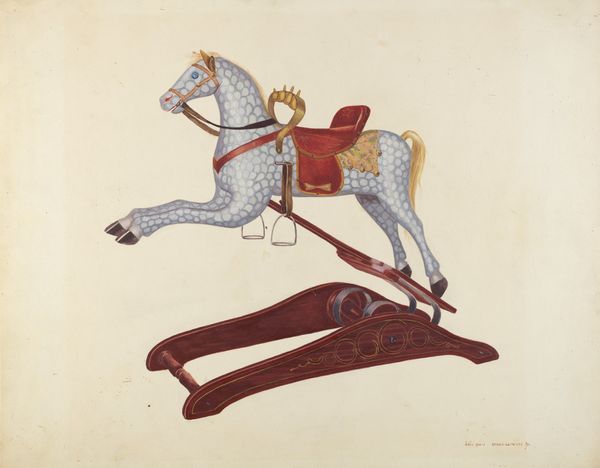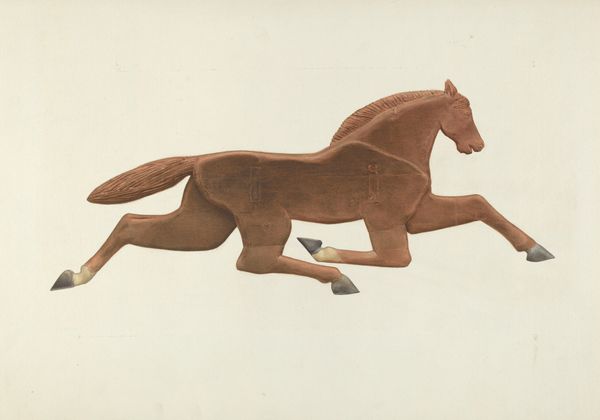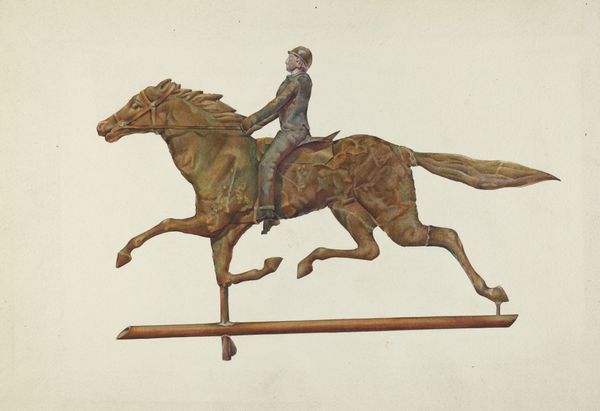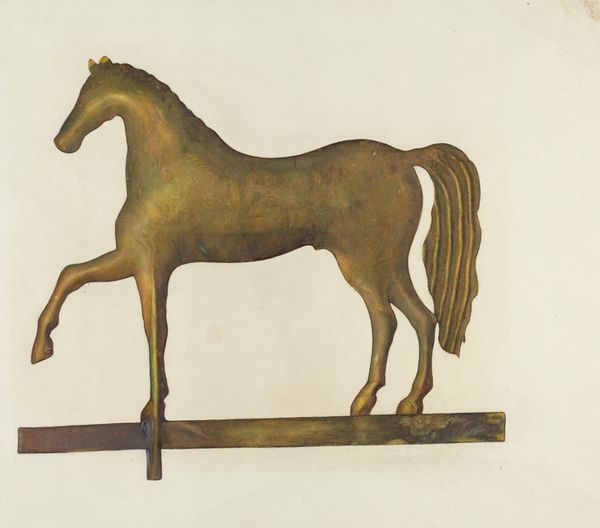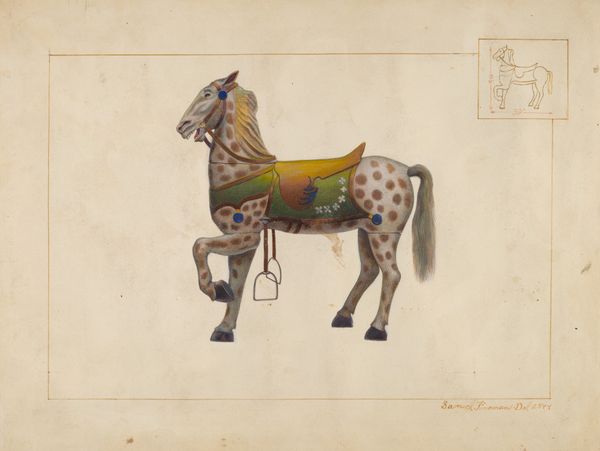
drawing, watercolor
#
drawing
#
figuration
#
oil painting
#
watercolor
#
folk-art
#
watercolour illustration
Dimensions: overall: 37.9 x 29.3 cm (14 15/16 x 11 9/16 in.) Original IAD Object: 5" high; 2" wide; 3 3/4" long
Copyright: National Gallery of Art: CC0 1.0
Curator: We’re looking at Carl Strehlau’s "Pa. German Toy Soldier," a watercolor drawing likely created between 1935 and 1942. Two toy horses, each bearing a miniature soldier, are rendered against a neutral backdrop. Editor: The first impression is charming, nostalgic. A little melancholy, even. These toys speak of childhood, but the soldier motif hints at a heavier theme—the specter of war. Curator: Precisely. And watercolor lends itself perfectly to the folk-art feel, don’t you think? This would not have been just ‘high art’ hanging in a salon, but an exercise in skilled labor, craftsmanship. The production of the actual toy could speak of community—of making. I am interested in what wood might have been available to Strehlau for these forms... Editor: Absolutely, though for me, it's the figures that dominate. Their upright postures, their somewhat stern faces – they evoke a very particular, militaristic ideal, prevalent across several historical periods. I am wondering what such images signified at the time for kids playing with them, during those uncertain years... What type of narrative was imposed or expected around these toys, you think? Curator: Well, given the time, mass production may have had impact in this sort of individual artisan practice of hand-painting a drawing of a carved wooden toy... Watercolor is an accessible and relatively affordable medium... and drawing like painting might mean an artist can produce more images quickly.. Editor: The colors themselves resonate symbolically – the somber reds and browns, punctuated by that drab, almost uniform green, it’s all loaded. There's this sense of imposed structure – how even childhood, represented here in such tender renderings, can be framed through expectation and duty, don’t you think? Curator: Yes, I concede a darker hue... Yet, thinking materially about production is key. The choice to depict such rudimentary manufacture allows to think of folk culture outside of established high art canon, of craft as work. It brings new narratives outside official history... Editor: A worthy note. It certainly forces us to question where and how we frame and ultimately memorialize our collective values... Curator: I agree, it is where we see both artistic tradition and social consciousness co-exist. Editor: Leaving a fascinating record about production, meaning, and memory.
Comments
No comments
Be the first to comment and join the conversation on the ultimate creative platform.
